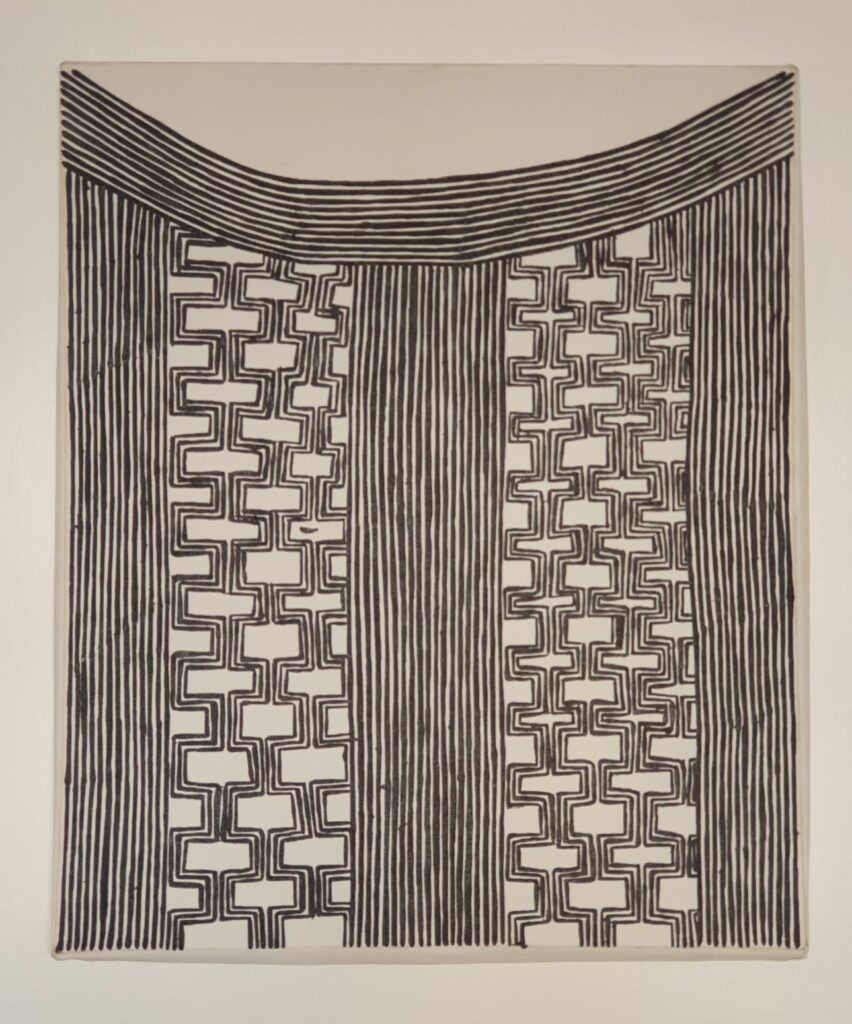
I recently made a design and this is what I will speak about. This painting gave me the opportunity to express a bit about my struggle over the loss of my husband. As I mentioned, I live within my traditions and my tradition dictates that a person who loses a husband, wife or child should undergo a long period of mourning, without raising their voice and always speaking in a low voice, not speaking in public or showing their picture. And there are some other things that we should not do and these acts demonstrate respect with this beloved being who departed. Therefore, this was the way to express my pain, my affection, my love and mourning for my husband. I took a few days to complete the painting, because my mourning was very recent and each time that I remembered my husband, I stopped and cried a lot.
The design that I made is called NGOKONTIRE. This was a type of painting that our ancestor Kaiapo women from Kubenkrankei used in our traditional festival called the MENIRE BIOK. This was a festival only for women, but it is no longer used and wound up being forgotten until before the Encontro de Altamira gathering. In 1989, my husband Paiakan found an old photograph of a Mebengokre ancestor using this design and he remembered when he was a child and watched the festival when the women used this design. This was when he asked that I paint it in homage of the women and our traditions that had been forgotten over time, it was a way that he saw to revive our tradition for all those who were present at that encounter. Since then, our people began to use this painting again, now, not only women, but men also use it.
I chose this symbol not only for what it represents in my culture, but also to pay homage to my husband, who was not able to paint his body for the last time, as my culture calls for.